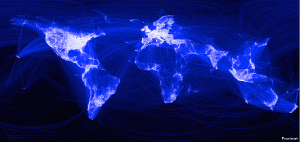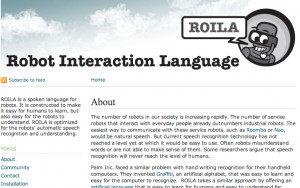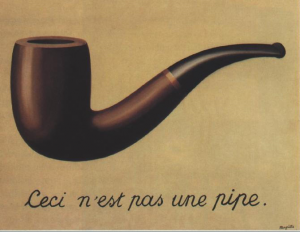It was incredible, and slightly surreal, to see not only just how fast news spread that Osama bin Laden had been killed in an attack by U.S forces, but also how fast people began analyzing what his death meant for the country as a whole, for the President’s term in office, and for the people who had lost family members during September 11th. The president’s address on the subject was streaming over the internet just minutes after the formal announcement; people had gathered not only in front of the White House, but also in communities elsewhere in the country to celebrate before the President had even delivered his speech; others had begun criticizing the revelers’ actions as uncouth, no matter how bad the man who had been killed, as soon as the news and response had popped up. By the time most people woke up the next day, they had heard what happened, either through their own investigations or because someone had called or texted them.
As fast as news was traveling to them, people were analyzing it for meaning, and in doing so, putting theories out on the internet about every conceivable topic related to Osama bin Laden’s death. His death came to stand for so many different things in so many different topics, and the technology that produced that also produced a very specific response, one that could only be imagined in the age of the internet.
One of the first things that people began discussing was the impact this would have on the 2012 Presidential election. At the time of this writing, there are almost 57,000 articles devoted to commenting, predicting, or satirizing the effect that Osama’s death might have on Obama’s chances in the next election, as reported on Google, all within the last 36 hours. Things like this are already old news on the internet:
In the wake of the never-ending financial crisis and the wars inherited from President Bush that had, for the previous part of Obama’s presidency, hung like an albatross around his neck, it was immediately recognized just what an accomplishment this was, finding Bin Laden. The task was pretty much a punchline to most of us. So, when the news came in, a wave of praise rose up for Obama, cartoons like that one, and the one here: http://www.collegehumor.com/picture/6498012/csi-obama The humor—and for those of us who have sided with Obama despite falling poll numbers, a slight sense of unflatteringly smug satisfaction (although that might just be me)—comes from the fact that this momentous thing happened during a time where birthers and now people who doubt Obama’s academic credentials are trying to discredit him left and right, all the while doing one of the things that people doubted would ever happen, under him or anyone else.
However, some people who may or may not have had a problem with Obama before criticized the ecstatic attribution of Osama’s discovery and death to Obama.
I’d say the real people to thank are the guys at the CIA who managed to figure out where Bin Laden was hiding. If all that was needed was some tough Navy Seals to jump in and kill him, he’d have been dead before September of 2001 was over. Finding him is the important part, and the CIA managed to pull that off. And really, organizing such a major investigation as that requires some careful management, so as the chief executive Obama did have a fairly important role to play besides “hey yeah you guys should go find him’. (AV Club, “Weekend Box Office: Osama is Dead! (And Some People Bought Tickets to See Furious Five)”)
Already reactions and counter-reactions have sprung up, and not just the pundits or the news anchors was weighing in to disseminate and comment upon the information, but everyone with an internet connection. Facebook newsfeeds were filled with status updates and notes about Osama’s death. The sentiments may not be all that different than what has been expressed about presidents in the past, but the method of expression is unique to the internet age.
To bring this back to a point of the reading we’ve done in the past semester, Tim Wu discusses in Chapter 21 just how the internet, being a fractured and democratic form of information technology, allows everyone not only to have an equal say, but to have a pretty equal chance of getting it out so that anyone else with an internet connection can hear them. “It cannot be denied that the Internet has ushered in a time of unprecedented diversity an ease of communication and commerce, a broadly available way of reaching millions of people. And each of those millions of networked parties can in turn claim the role of what was once called, with appropriate distinction, a ‘broadcaster’” (317). The internet provides whole new realms for discussion, where the inappropriate is de rigueur, and where someone’s immediate reaction can become a sensation that lives on, for future readers to discover and comment upon, in ways that cannot be achieved in a television, or book, or speech-dominated society. Everyone’s internet presence is available for everyone to see almost immediately, and things of note from people who were otherwise unnoticeable happen every minute. At the same time, reactions, reactions to reactions, and numerous different analyses crop up and take off for a myriad of different discussions and interpretations of what something means that also disseminate into the common knowledge. Events mean more things to more people, sometimes many things to the same people, as they do here, rather than the monolithic interpretation that would have come along with a single outlet.
Moreover, as I alluded to before, the myriad of outlets and “broadcasters” means that there are a myriad of interpretations of the situations at hand, all of which—if not quite considered equal in validity—are at least considered and discussed. Shortly before the broadcast of President Obama’s speech, Brian Williams was interviewing a member of President Bush’s cabinet, and for his opening question, he asked one of the questions that I had seen many other people, ordinary citizens, pose on the internet: what do you think this means for President Bush (and, in an underlying statement, the people who sided with him both during his presidency when their judgment was criticized and afterwards as a criticism of Obama)? On this train of thought, people began predicting the Democrats’ chances for a victory over the Republicans in the 2012 Presidential Election, talking about what Donald Trump’s direct criticism of Obama now meant in terms of his public image, and reviving attacks against the Birthers, each of which had a bunch of different counter-responses. At the same time, people were discussing what the revelers in front of the White House (and elsewhere) meant about the American lust for revenge, and still others were discussing what this meant for our relations with Pakistan, or the sense of closure this actually did or didn’t bring to the families of victims claimed by 9/11.
The Piercian model that Chandler discusses seems to fit so seamlessly here: the influx of opinions and the multifaceted nature of the interpretation to which they give rise fits the tripartite model which opens up the interpretation of any symbol to diachrony. Osama bin Laden’s death is a symbol, not yet an icon and probably never an index, where it stands for any and all of these things and more simultaneously, and with the expectation that those associations will change as sentiments do, or as new details come to light over time. Pierce’s commitment to diachrony allows us to think about bin Laden’s death in all of the multifaceted aspects that it represents for us as broadcasters in the internet age. As I said before: in a place where anybody has as much say and as much ability to be heard as the next person, any symbol is pretty much guaranteed to have a huge number of “official” interpretations, and the diachronic model allows us to think most accurately about the semiotics of bin Laden’s death in the internet age and beyond.




